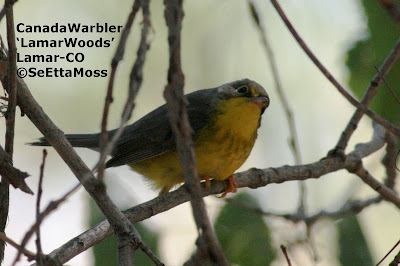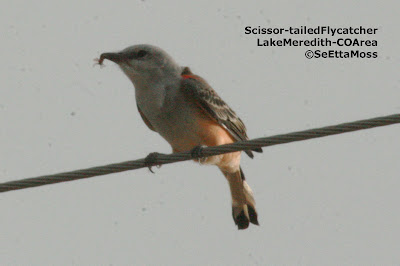Canada Warbler, more pics

This little beauty almost gave me the slip as I lost it for about an hour. When I refound it this warbler was not cooperative--it stayed in the shrubs and behind small branches never letting me approach closer than about 35 feet away. With all the other 30 or so migrating warblers- mostly Orange-crowned, some Wilson's and at least one Nashville-flitting around I had a difficult time keeping track of it. The top pic provides another angle of view but the bottom pic, though not as crisp, shows the white undertail coverts. SeEtta









